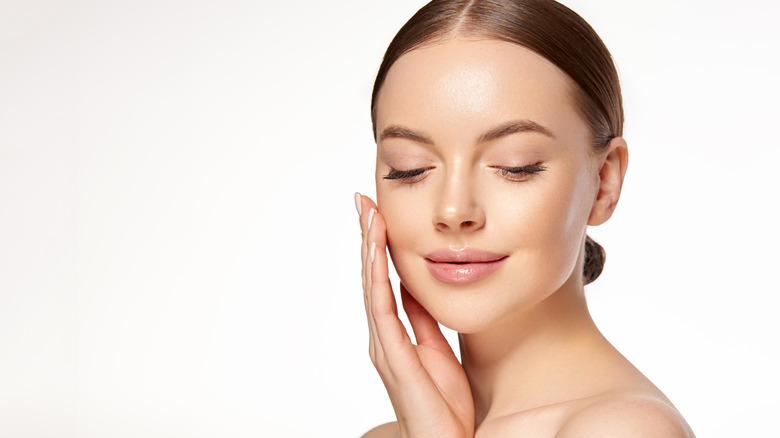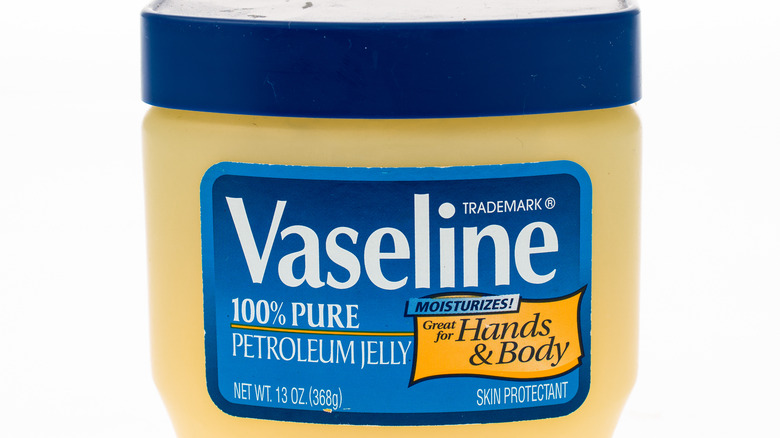What Is Slugging And How Can It Help Your Skincare?
The hunt for the newest skin and beauty trend is on. Though let's face it — it's never been off. We are amazed with the tips and tricks fellow beauty enthusiasts share. And we're here to spread their findings, plus a little extra. After combing Reddit and TikTok, we found a trending skin care technique that can be added to any routine if moisture is what you seek!
Enter slugging.
"In truth, dermatologists have been 'slugging' for years. We just didn't come up with a cute name for it," says Shari Marchbein, MD, a board-certified dermatologist and clinical assistant professor of dermatology at NYU School of Medicine. "I don't go to bed without it" (via Teen Vogue).
What is slugging? The technique refers to piling on a healthy amount of a petroleum-based product as the final step of your nightly skin care routine (via Real Simple). Your skin will look shiny and slippery, like a slug — hence the name, per mindbodygreen.
Dr. Mona Gohara, associate clinical professor of dermatology at the Yale School of Medicine, tells Shape that "Slugging essentially acts as a buoy to the barrier, keeping water locked in and the skin plumped." She also admits that she does it every night. So if the professionals are doing it, it's definitely worth checking out.
Slugging locks in moisture, especially during cold weather
The best time to add slugging into your routine could be during colder months. "I think slugging is a great skincare technique in the wintertime for those with dry or sensitive skin," says Marchbein. "Petroleum jelly is an occlusive that is not only amazing at soothing irritated skin and promoting wound healing, but it can act as a protective barrier for the skin, too" (via Real Simple).
How is petroleum so helpful to the skin? Petroleum-based products like Vaseline are "famous for being thicker and occlusive, which means they are not breathable and lock in moisture to your skin, which reduces transepidermal water loss," says Michelle Henry, MD, a board-certified dermatologist and clinical instructor of dermatology at Weill Cornell Medical College in New York City (via Real Simple).
As with any skin care technique, slugging isn't for everyone. Per mindbodygreen, "if you have oily or acne-prone skin, you especially might want to steer clear." Dr. Loretta Ciraldo, a board-certified dermatologist, recommends that you take before-and-after photos when you start slugging. "Sometimes issues like clogged pores or an increase in surface oils may not show up for several days, so it's important to follow with daily photographs to see if there are any adverse reactions or visible benefits," she explains.
While slugging doesn't necessarily sound like the funnest thing to subject your face to, if it holds in moisture (particularly helpful for those with dry and/or sensitive skin), it may be worth a try.

